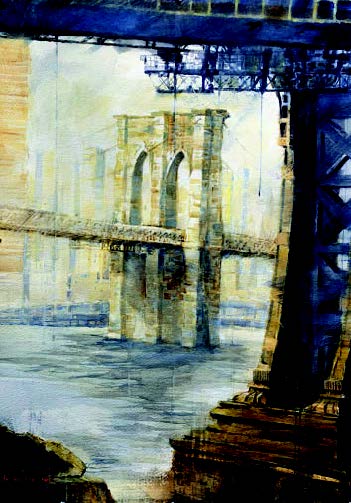Daring to rethink the Brooklyn Bridge on its 140th birthday

BROOKLYN BRIDGE — To the west, the setting sun frames the towering buildings that define Manhattan as they slowly begin to sparkle with their own lights. To the east, the brownstone row houses of Brooklyn Heights fade into the night. Connecting them all is the Brooklyn Bridge, which will be 140 years old on May 24, 2023. Such a momentous occasion provides the opportunity to reflect upon the Brooklyn Bridge for what it was, what it is today, and perhaps what it can be in its next 140 years.
John Augustus Roebling’s life is the fabric from which American dreams are spun. His design of the Brooklyn Bridge and his pioneering introduction of steel cabling made the Brooklyn Bridge, at its opening, the longest and strongest suspension bridge ever. Before the Brooklyn Bridge, suspension bridges were held by ropes or iron chains that often failed.

The Brooklyn Bridge would be the first to use steel for its wires, cables, and trusses. Today, Roebling remains the pathfinder of modern bridge building. His Brooklyn Bridge, at its opening, cost $15.1 million with Gothic arches that echoed the architecture of the past while its steel cabling foretold the future. Hailed as the “new eighth wonder of the world,” its presence signaled the start of the “Golden Age” of American bridge building and a time of immense hope, ambition, and invention.

Brooklyn Boro
View MoreNew York City’s most populous borough, Brooklyn, is home to nearly 2.6 million residents. If Brooklyn were an independent city it would be the fourth largest city in the United States. While Brooklyn has become the epitome of ‘cool and hip’ in recent years, for those that were born here, raised families here and improved communities over the years, Brooklyn has never been ‘uncool’.